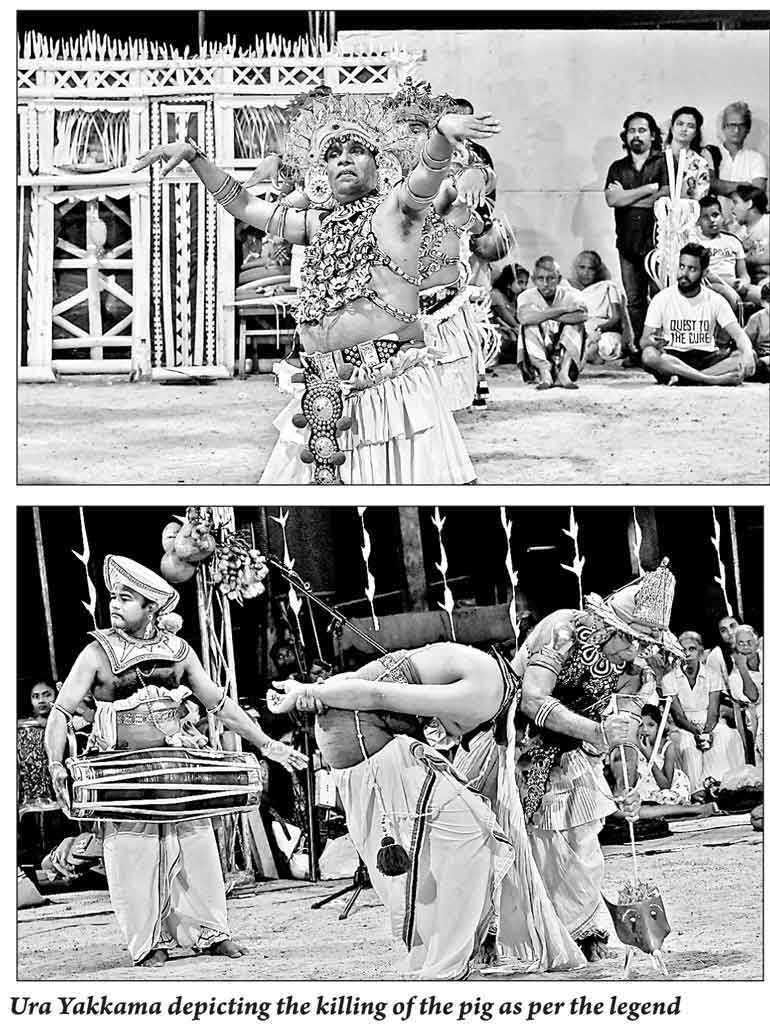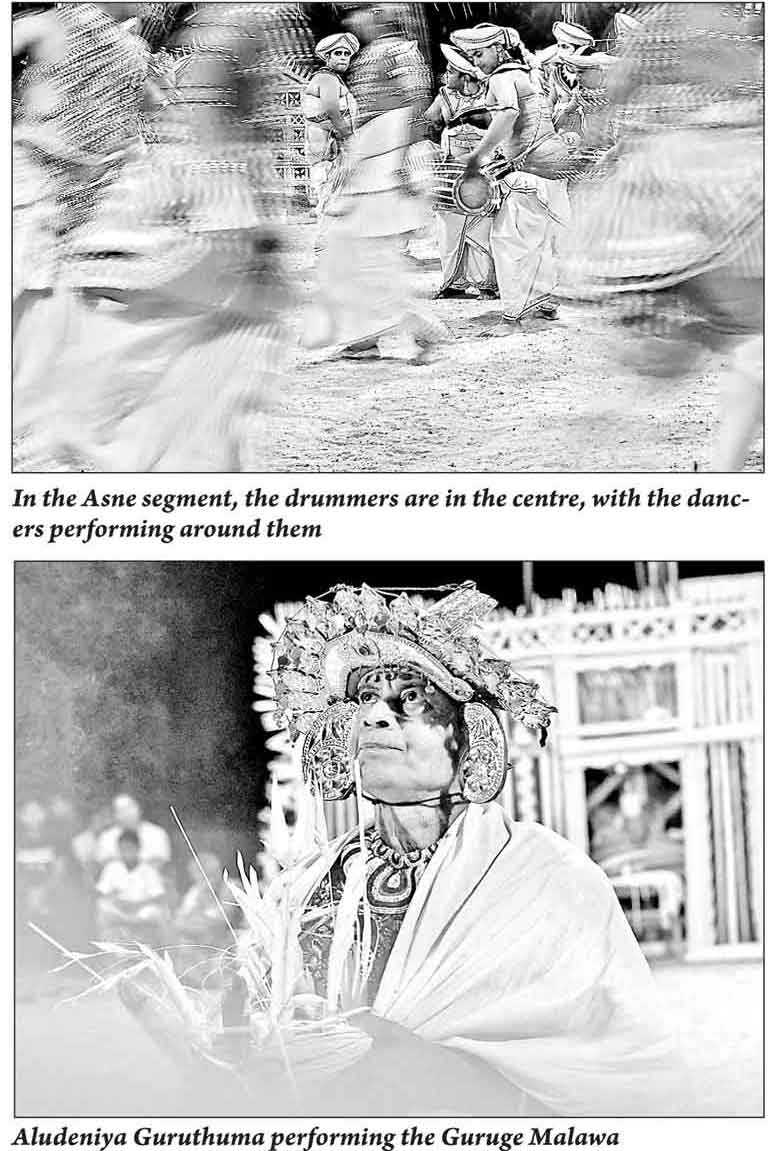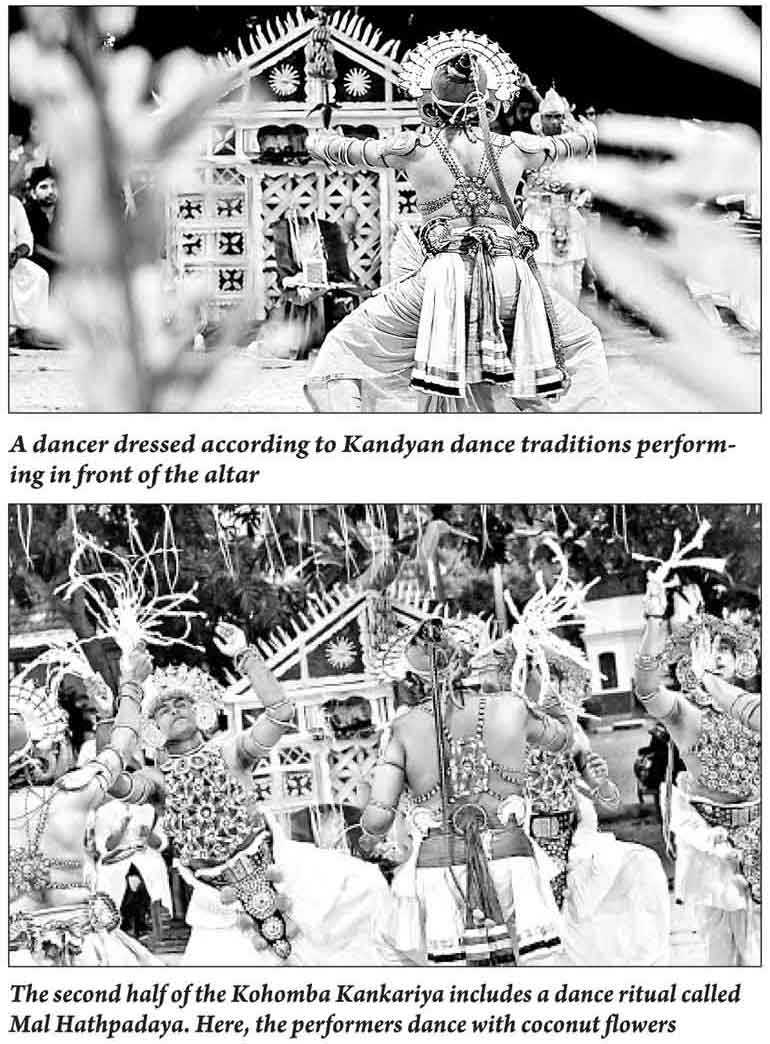Saturday Apr 20, 2024
Saturday Apr 20, 2024
Saturday, 25 January 2020 00:02 - - {{hitsCtrl.values.hits}}
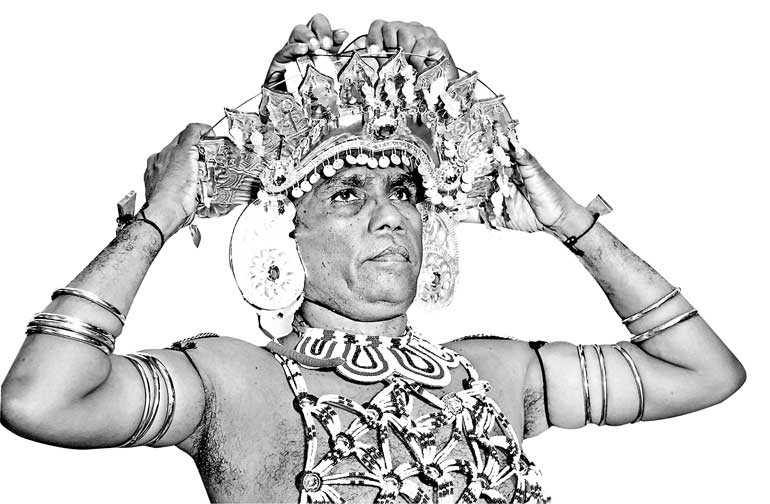
Text and pix by Shehan Gunasekara
Accomplished percussionist Ravibandu Vidyapathi introduced experimental percussion symphony to the world. He is also a dance performer, choreographer, and instructor, as well as a theatre costume and prop designer.
While Ravibandu’s talents and skills are a many, he also comes from a family of artistes. His father, Somabandu Vidyapathi, is a pioneer artist of Sri Lanka. His mother, Malathi Algama, is a dancer who trained in dance and ballet under the tutelage of Chithrasena. Ravibandu’s maternal grandfather is Algama Kiriganitha, a well-known name in Kandyan dancing. While Ravibandu needs no further introduction, the artiste celebrated his 60th birthday with a performance of the Kohomba Yak Kankariya, a ceremonial dance, at the Kotte Raja Maha Viharaya. The dance was performed by students of the Ravibandu-Samanthi Narthanayathanaya as well as Hathkoralaye Aludeniya Guruthuma and his dance troupe.
Kohomba Kankariya can be identified as the birth of ceremonial dances rooted in folk beliefs and Kandyan dance traditions. Its origins can be traced back to Prince Vijaya, the son of Sinhabahu, a king of ancient India. According to legend, having been exiled from the kingdom along with 700 followers due to outrageous behaviour, Prince Vijaya made his way to Sri Lanka.
Here he meets and gets married to a Yaksha tribe princess named Kuweni and becomes the ruler of the country. Later, upon the advice of one of his ministers, Upatissa, Vijaya drives off Kuweni and their two children and marries an Aryan princess from the Madhura City of India.
Kuweni curses the entire Aryan royal ancestry, including Vijaya, before she is killed by the Yaksha tribe. Kuweni’s curse manifests itself in the form of a dream, where a leopard extends its long tongue towards Vijaya whenever he falls asleep, and the curse torments Vijaya until his death. While Upatissa succeeds Vijaya, his reigns lasts for a very short time and Panduvasdeva, who also arrives from India, is crowned as king. He too, finds himself affected by Kuweni’s curse.
Lord Sakra sees Panduvasdeva’s suffering and realises that it can only be cast out by King Malaya and his three siblings. They are referred to as the Malaya Rata Thun Kattuwa in legends. Lord Sakra then delegates Rahu, an Asura, to tactfully bring the king and his siblings to Sri Lanka.
Rahu goes to India and, taking the form of a pig, destroys the king’s gardens. Angered over the incident, King Malaya, along with his three brothers, chase behind the pig, who crosses over the ocean and into Sri Lanka.
At the foot of the Hanthana Mountain, King Malaya shoots an arrow at the pig, who turns into a rock. Then Lord Sakra, taking the form of a human, explains Kuweni’s curse to King Malaya. The King holds a ceremonial dance called Hatapaha (Sixty-Five) Mangalya for a duration of seven days at the Anuradhapura Mahamevna Park to lift the curse not only from King Paduvasdeva but also all future kings. For this purpose, he brings brahmans all the way from India.
Once King Paduvasdeva recovers, King Malaya appoints the Kohomba Yak deity, also known as Prince Kohomba, to perform the ceremonial dance. The king hands over a part of his outfit to the deity so that he will have with him clothes with powers to cure those affected in case a similar curse is cast again. This outfit is what is now known as Ves costumes. When performing the Kohomba Kankariya, the dancer wears the Ves costume as well as part of King Malaya’s outfit.
Hisa ves bandima and ves costumes play a huge role in Kandyan dance rituals and it is said that they were first introduced to the dance tradition through the Kohomba Kankariya ceremonial dance.
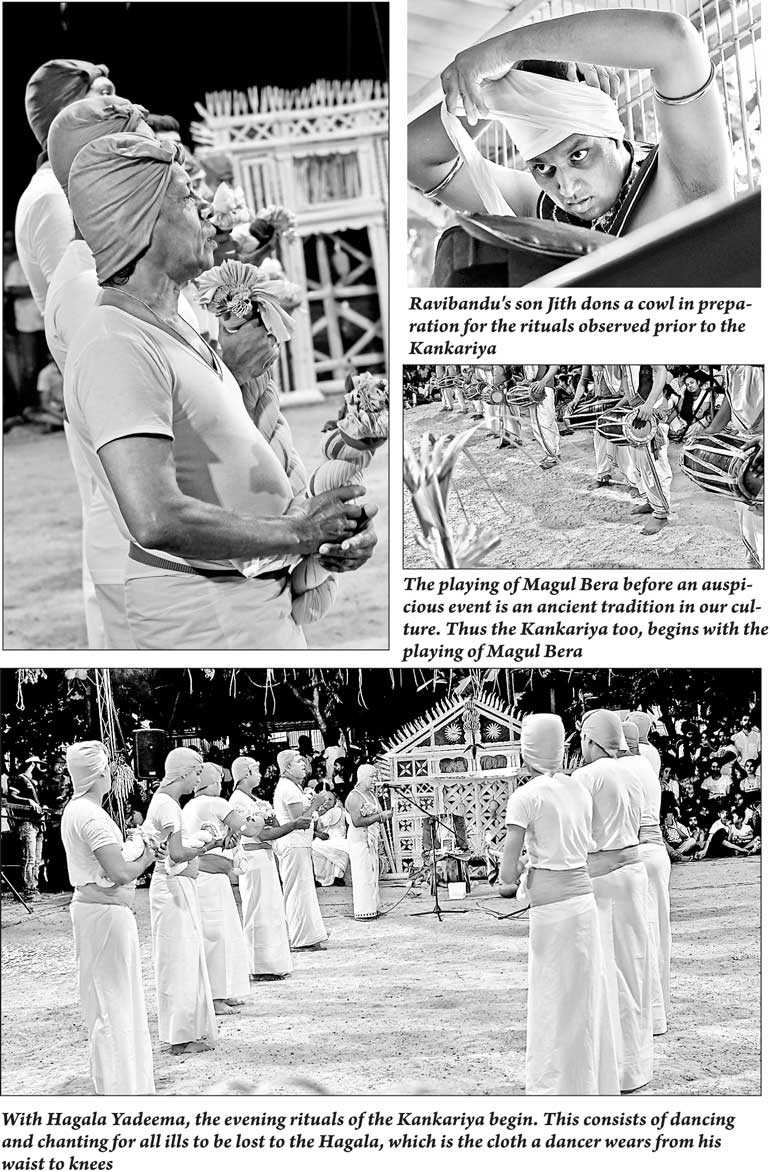
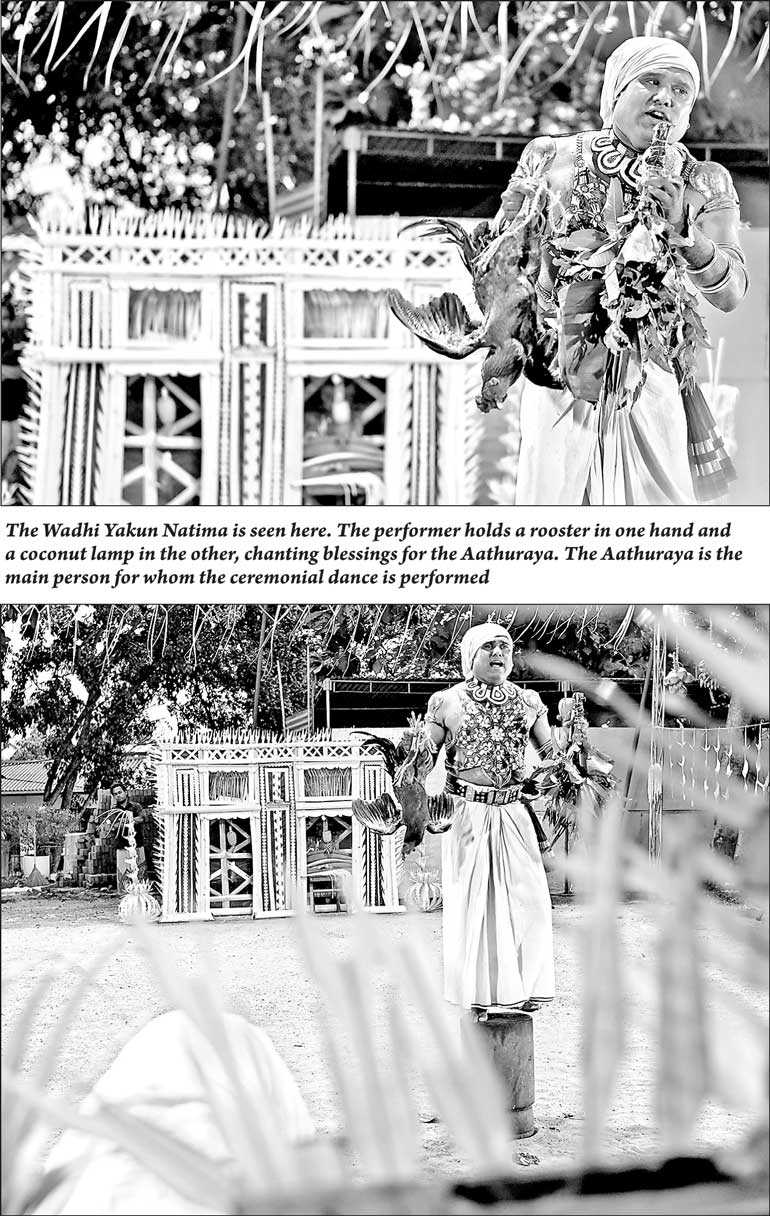
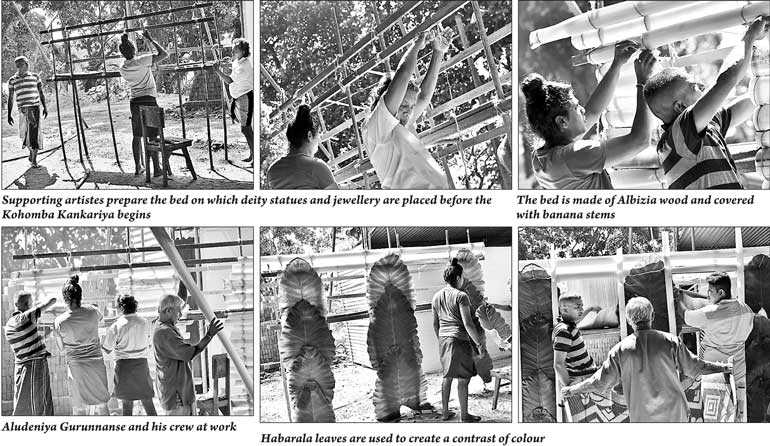


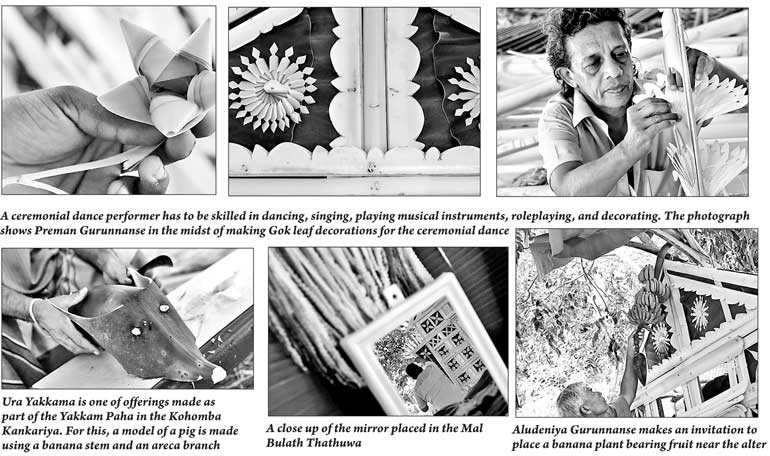
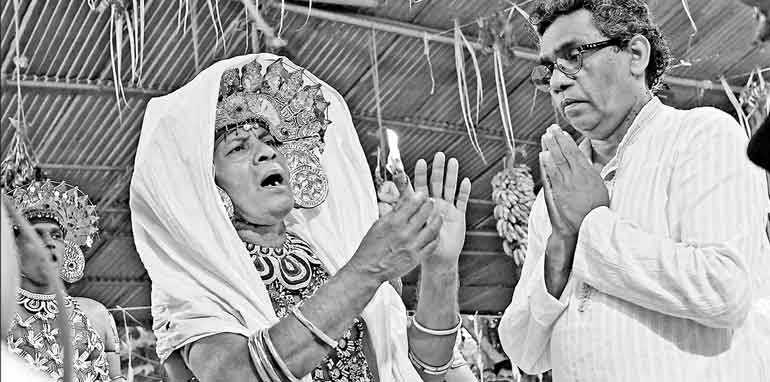
At the end of the ceremonial dance, the main devil dancer blesses the Aathuraya

Ravibandu joining the first group performance of the Kohomba Kankari ceremonial dance
